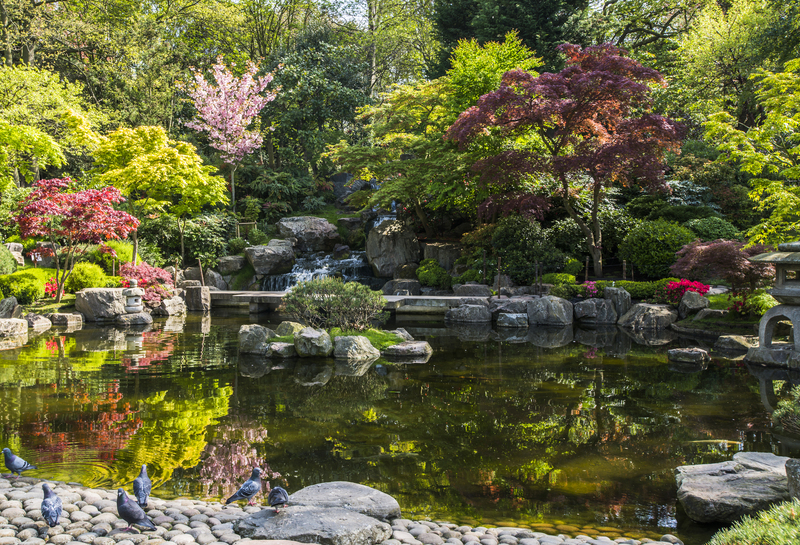Garden Makeover Basics: Launching the Revival Process
Posted on 01/07/2025
Garden Makeover Basics: Launching the Revival Process
A beautiful garden is not only an oasis of relaxation but also a vital element that increases your property's curb appeal and value. Whether your outdoor space has become overgrown or outdated, revamping it is essential. This comprehensive guide to garden makeover basics will equip you with actionable steps for launching the revival process, helping your garden flourish into a vibrant, functional haven.

Why Start a Garden Makeover?
- Increase aesthetic value: A revamp instantly enhances your home's appearance.
- Boost property worth: Updated landscaping can add significant value to your home.
- Improve usability: Reorganizing layouts makes your garden more functional for leisure or entertaining.
- Support biodiversity: New plantings attract pollinators and support local ecosystems.
- Promote wellbeing: Outdoor spaces foster mental relaxation and physical activity.
Understanding the garden makeover process can be the difference between a plan that flops and one that flourishes. Let's dive into the essentials of revitalizing your outdoor area.
Step 1: Analyze and Assess the Current Garden
Before you can revive your garden, take a step back and assess its current condition. Walk through your space, and consider:
- Existing plants: Which are thriving? Which are failing?
- Materials: Are fences, patios, or borders intact, or do they need repair?
- Layout: Does the current design suit your needs and style?
- Sun and shade patterns: Identify areas that receive full sun, partial shade, or deep shade--crucial for plant selection during the garden transformation process.
- Soil quality: Check for compacted, dry, or nutrient-poor areas.
_Tip_: Take notes, photos, and measurements to aid your planning, helping you make informed decisions throughout your garden restoration journey.
Creating a Garden Wish List
Decide what you want from your new garden. Do you dream of a quiet reading nook, a lively play area, or vegetable patches? List your priorities and inspirations so you remain focused during your makeover journey.
Step 2: Define a Revitalization Plan
Meticulous planning is the foundation of any successful garden renovation. Here's how to develop a strategic action plan:
- Budget: Set a realistic estimate for materials, plants, tools, and labor.
- Timeline: Create a flexible schedule that accommodates weather and your availability.
- Style inspiration: Research trending garden styles--cottage, Japanese, Mediterranean, modern, or wildlife-friendly designs.
- Sketch your ideal garden: Use your notes and measurements to draw a basic outline, showing new beds, seating areas, pathways, and features.
The garden makeover basics are built on adaptability and vision. Your plan may evolve as you progress, but having a blueprint keeps your project cohesive.
Choosing the Right Plants
Plant selection is crucial when launching a garden revival. Match the planting scheme with your area's sun, shade, climate, and soil conditions. Consider:
- Native species: These thrive in local conditions, are low-maintenance, and support native wildlife.
- Seasonal interest: Mix plants for year-round color, scent, and texture.
- Evergreens: Offer structure during winter months.
- Perennials and annuals: Balance low-maintenance, recurring blooms with seasonal color splashes.
- Edibles: Try incorporating raised beds or border vegetables for beauty and utility.
_Pro Tip_: Visit your local nursery and consult with experts to identify robust, non-invasive species ideal for your space.
Step 3: Clearing, Cleaning, and Preparing the Site
Revamping an old garden starts by restoring order. Begin with these essentials for a clean slate:
- Remove debris: Rake leaves, dispose of dead plants, old mulch, and litter.
- Prune existing shrubs/trees: Remove broken or overgrown branches and shape existing plants.
- Weed control: Pull up invasive weeds and unwanted plants at the roots to prevent regrowth.
- Lawn repair: Aerate, reseed bare patches, or lay new turf if the lawn is beyond repair.
- Edge beds: Redefine lawn and border edges with a crisp spade line.
Pristine groundwork is vital in the garden revitalization process and makes the following steps smoother.
Soil Improvement Strategies
Healthy soil underpins every successful garden transformation. Here's how to revive tired earth:
- Amend soil with organic matter--compost, leaf mold, aged manure.
- Test pH and add amendments (lime for acidic, sulfur for alkaline).
- Ensure good drainage by loosening compacted areas and adding sand where needed.
_Healthy soil equals healthy plants. Don't rush this crucial step!_
Step 4: Structural and Hardscape Updates
A garden makeover isn't just about plants. Refreshing your garden's structure gives your space lasting wow-factor and function. Consider:
- Paving and patios: Re-lay old flagstones, clean existing slabs, or install new stepping stones.
- Raised beds or retaining walls: Build with wood, bricks, or stone to add definition and solve sloped or uneven ground challenges.
- Pathways: Use gravel, bark, wood planks, or tiles for clear movement throughout the space.
- Fencing and trellises: Repair, repaint, or install new trellises for climbing plants to add privacy and vertical interest.
- Garden rooms: Subdivide with hedges or screens to create distinct zones for lounging, dining, or play.
_Tip: Implement low-maintenance hardscaping to reduce garden upkeep and maximize enjoyment._
Step 5: Planting and Mulching
The Art of Planting
Now comes the creative part of the garden revival process: planting! Follow your plans and start with:
- Large specimens: Trees and large shrubs go in first--these anchor your design.
- Smaller shrubs and perennials: Layer these for height, color, and texture.
- Groundcovers: Fill gaps to prevent weeds and stabilize soil.
- Bulbs and annuals: Add instant pops of color and scent.
Mulching: The Ultimate Finishing Touch
Apply 2-4 inches of organic mulch (bark chips, pine needles, leaf mold) around plant bases. Mulching:
- Suppresses weeds.
- Retains crucial moisture.
- Regulates soil temperature.
- Improves organic content as it breaks down.
_Mulch is your garden's protective blanket--don't skip it!_
Step 6: Adding Decorative and Practical Features
To complete your garden makeover and ensure it feels both stylish and personal, add:
- Outdoor lighting: Solar path lights, fairy lights in trees, or spotlights on focal points set ambiance and safety.
- Water features: Birdbaths, small ponds, or fountains boost tranquility and attract wildlife.
- Garden furniture: Benches, bistro sets, or hammocks provide comfortable resting spots.
- Art and ornaments: Statues, mirrors, or mosaic stepping stones offer personality.
- Wildlife habitats: Bug hotels, birdhouses, or log piles foster biodiversity.
_Tip: Resist clutter--choose a few statement pieces that reflect your style without overcrowding the space._
Step 7: Ongoing Maintenance for Lasting Beauty
The key to a successful garden transformation is regular care. Maintenance includes:
- Watering: Use soaker hoses or drip systems for efficient irrigation.
- Weeding: Inspect weekly and pull new weeds before they spread.
- Pruning: Shape shrubs and roses and deadhead spent blooms for longer flowering.
- Lawn care: Mow, fertilize, and treat for pests as needed.
- Seasonal updates: Add new plants or refresh mulch each season to keep the look fresh.
_Consistency is the secret ingredient to sustaining your stunning new garden._
Common Mistakes to Avoid in a Garden Makeover
- Neglecting to improve poor soil before planting.
- Ignoring local climate and growing conditions when choosing plants.
- Overcrowding with too many features or mismatched plants.
- Forgetting about mature plant size, leading to overcrowding as things grow.
- Skipping the planning phase, resulting in a lack of cohesion.
_Patience and planning are crucial in the garden makeover process. Avoid these common pitfalls for the best results._

Garden Makeover Trends and Inspirations
As you embark on your garden revitalization, consider modern landscaping trends for extra inspiration:
- Sustainable gardening: Drought-tolerant plants, rainwater harvesting, and using recycled materials.
- Wildlife-friendly gardens: Pollinator meadows, native hedgerows, and naturalistic planting.
- Edible landscapes: Integrating fruit trees, herbs, and vegetables into decorative beds.
- Low-maintenance designs: Gravel gardens, perennial borders, and automated irrigation.
- Outdoor living: Pergolas, fire pits, and outdoor kitchens for year-round enjoyment.
_Transforming your garden is more than a makeover--it's the beginning of a new lifestyle at home._
Conclusion: Kickstart Your Garden's Revival Today
A transformative garden makeover is an achievable dream with the right approach. By analyzing your space, crafting a considered plan, making structural improvements, selecting the right plants, and committing to ongoing care, your outdoor area will evolve into a lush sanctuary. Begin your garden revival process today, and watch your efforts blossom into beauty, function, and personal joy.
Ready to transform your outdoor space? Start with these garden makeover basics and turn your dream garden into a flourishing reality!

